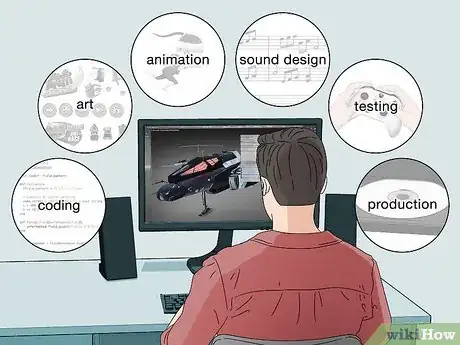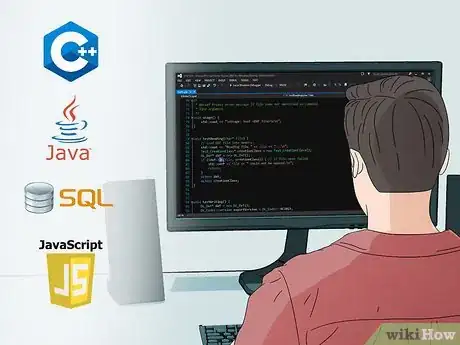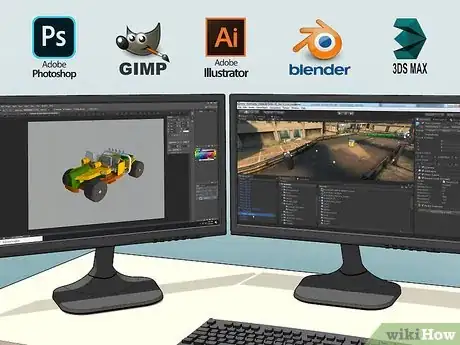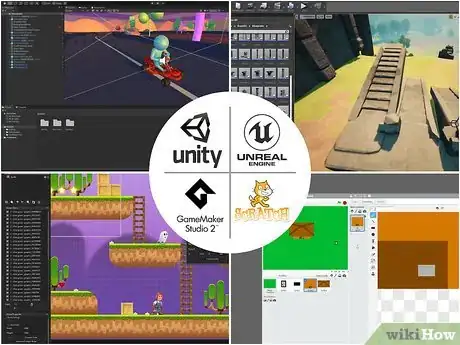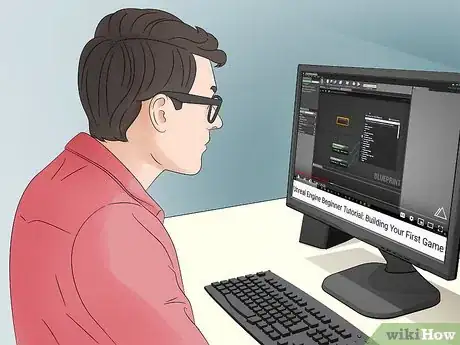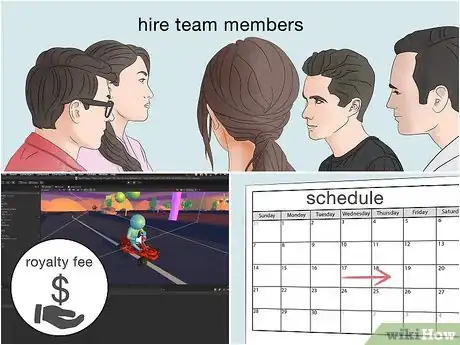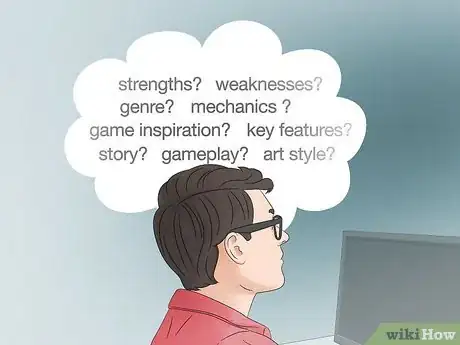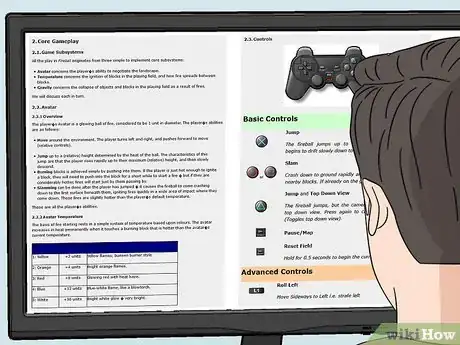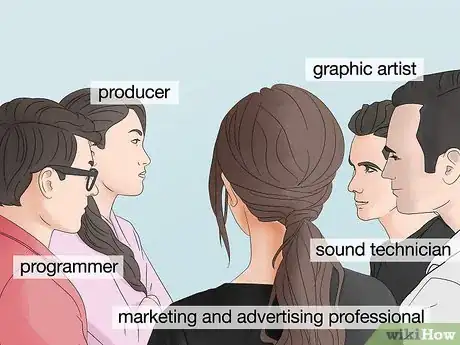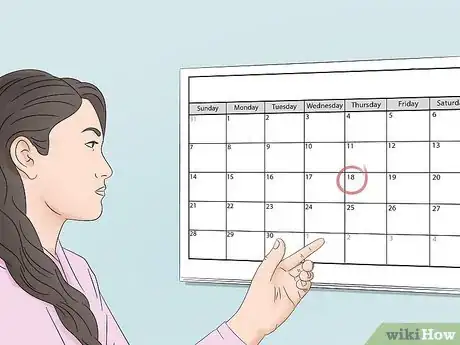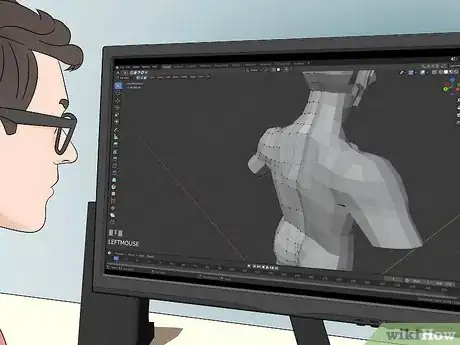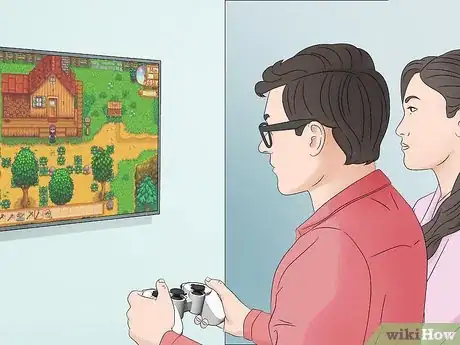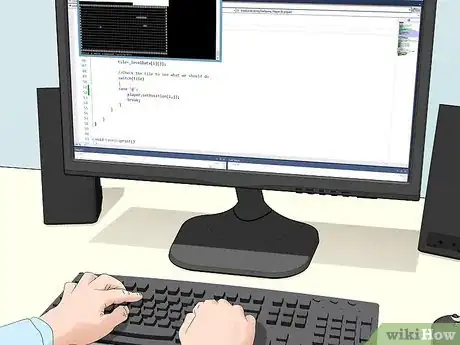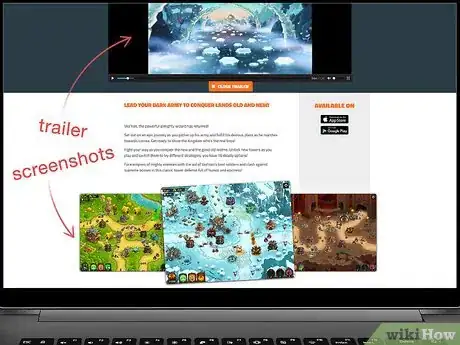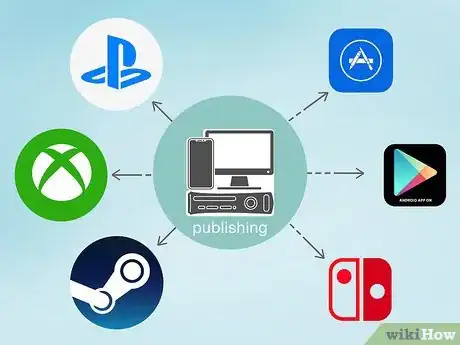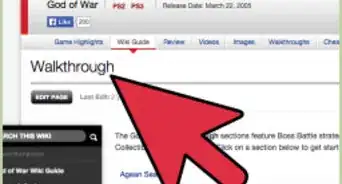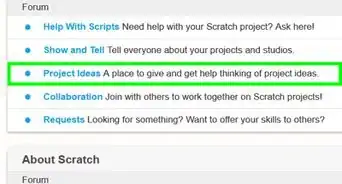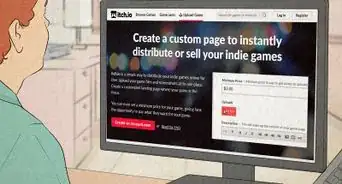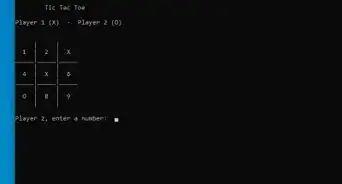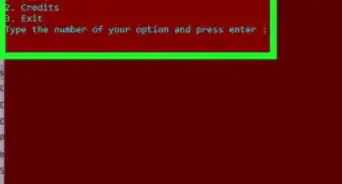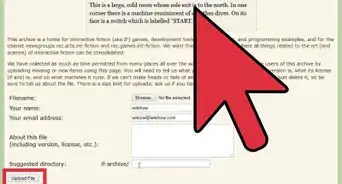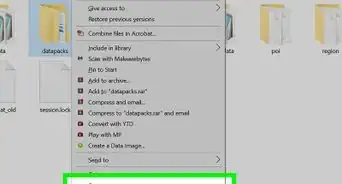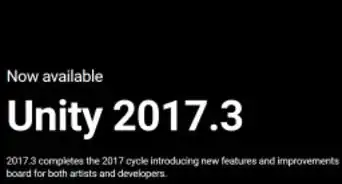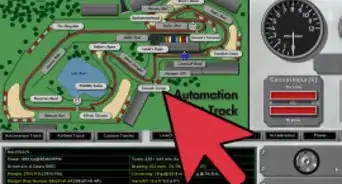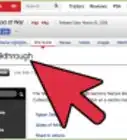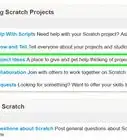This article was co-authored by wikiHow staff writer, Travis Boylls. Travis Boylls is a Technology Writer and Editor for wikiHow. Travis has experience writing technology-related articles, providing software customer service, and in graphic design. He specializes in Windows, macOS, Android, iOS, and Linux platforms. He studied graphic design at Pikes Peak Community College.
This article has been viewed 937,884 times.
Learn more...
Today, more people are playing video games than ever before, which means there's a lot of room for new people to come in and make something great. The process of making a video game is long and complex. It requires lots of different skills. This wikiHow teaches you the basics of how to make a video game from scratch.
Steps
Setting Up for Success
-
1Manage your expectations. Video game design requires lots of different skills, coding or scripting. It requires programming, art, animation, music, sound design, testing, production, financing, and more. All of this takes many hours to develop. Especially if you don't have a huge studio team. You need to understand what you can accomplish with the resources you have and within the time you have. If you're not realistic about what you can do, then you're likely to quickly become disappointed and give up. We don't want you to give up!
- If you've never designed a game before, start simple. Your first game should be a learning experience, not a masterpiece. The goal for your first game should be to make something that is playable as quickly as possible. Even if it's only a one-room level, with bad collision detection. Don't give up! Be proud of it. Your next game will be even better. Soon you'll be making games people want to play. [1]
- Consider going to work for a professional gaming company before developing your own game. You'll have a much easier time making a successful game and getting investors if you have the experience, education, and a well-known game attached to your name. This might require going to school or acquiring some skills, but it's still working towards your goal and it will be worth it in the end.
-
2Learn programming languages. While you can use a game engine to develop most of your game with little programming, know how to program gives you more control of your game development. There are lots of programming languages you can learn. You can take some classes to learn to program, or do some online tutorials. Games like Code Monkey, Code Combat, and Robocode are games that are designed to teach you how to program.[2] The following are some programming languages you can learn:
- C++: C++ is one of the most common programming languages. It's also one of the most difficult languages to learn, but it's worth it. C++ gives you more control over the computer hardware and graphical processes. Many game engines, such as Unreal, only accept information written in C++
- Java: Java is another common language that is used in a variety of applications. It is similar to C++, which makes it easy to learn alongside C++
- SQL: SQL stands for Structured Query Language. It is used to interact with online databases. If your game requires players to create an online account, or interact with other players online or features, you will need a database to manage all the user information. You can use SQL to create and manage the database.
- HTML, CSS, JavaScript: HTML/HTML5, CSS/CSS3, and JavaScript are all web development languages. They're all pretty easy to learn, but not used very often in game development. However, if you are new to game development, you can use these basic languages to make web browser-based games.
Advertisement -
3Learn about different graphics software. If you're not hiring a pro to do your graphics works, then you've got a lot of studying ahead of you. You'll need to learn to work a number of complex graphics programs, but you can do it! Photoshop, GIMP, Adobe Illustrator, Blender 3D, 3DS Max are good places to start if you want to make the visual elements of your game.
- If you don't think that you are a very good artist, consider using a minimalist art style. Many popular independent games are designed using an 8-bit pixel art style. Not only is it easier to draw, it evokes a sense of nostalgia in many gamers. Other games are designed using simple geometric shapes.
-
4Decide what game engine you want to use. The game engine is what makes a game run. It renders the graphics, animation, and sound, it processes the scripting, physics, and so much more. If you are talented enough, you can design your own game engine. You'll probably want to save some time and find an existing game engine. There are lots of powerful game engines you can choose from. Many of them are free to download and use. Most of them require you to purchase a license to get all the features and pay a royalty on the games you publish. The following are a few game engines you can look into:
- Unity: is a powerful game engine. It supports both 2D and 3D games and is not too difficult to learn. Many mobile and independent games are designed using Unity.
- Unreal 4: Unreal is another popular game engine. It does have a steep learning curve and is not recommended for beginner game designers. However, it is a powerful game engine used to create stunning visuals. Many popular games, including Fortnite, Mortal Kombat 11, and Final Fantasy VII Remake are designed in Unreal 4.
- Game Maker Studio 2: Game Maker Studio is a good game engine for those who don't have a lot of experience working with game engines. It's mostly used in making 2D games and has an interface that's pretty easy to use.
- Scratch: Scratch is an online game maker developed by MIT as an educational tool. If you have no experience with game design at all, this may be a good place to start.
-
5Learn the game engine. Game engines are some of the most complicated pieces of software. Once you decide on a game engine, you will need to take the time to learn how to use it. Luckily, there are many resources online that can help you. Read the user's manual, check out video tutorials, take classes, and consult online help forums to help you learn as much as you can.
-
6Design a basic prototype. Once you have the skills, design a prototype of your game. Your prototype does not need to have groundbreaking sound and visuals, it should not be a complete set of levels, or have all the enemies/power-ups/and weapons your protagonist uses. It should just be one basic level with basic visuals, and one or two enemies/obstacles to show off the core mechanics. You can use your prototype to play-test the concept and maybe even show investors in order to get financing.
-
7Consider your finances or schedule. If you are planning on publishing a game for money, you'll need to think about financing. Most game engines require you to pay royalties to use their software. You may need to purchase other programs, like graphic design tools or hire other team members to help you. This may require you to take out a loan or seek out investors. Even if you plan on designing a game all by yourself, you will still need to consider all the time it takes to design your game.
- To make an average quality indie game, you will need roughly in the hundreds of thousands of dollars. Major titles often take in the millions of dollars to develop.
- A lot of games have been developed using crowdfunding. Websites like Kickstarter, and Fig can be great ways to raise money for a project. But you'll want to make sure you have the skills to deliver on the product you are selling. While plenty of crowdfunding campaigns have been a success, plenty have also failed.
Developing Your Game
-
1Plan your game. Before you start designing your game, there are some things you'll want to think about[3] Some questions you might want to ask yourself before you start developing are as follows:
- What are my strengths as a designer?
- What are my weaknesses?
- What kind of game can I make based on my strengths?
- What is the genre of the game?
- What are some game mechanics that you find make a game enjoyable?
- What are some game mechanics you find frustrating?
- What games is your game inspired by?
- How is it different from other similar games?
- What will be the key features of the game?
- How long will it take to develop these features?
- Are there any features I want that I don't know how to make?
- What features can the game do without, if needed?
- Does the game have a story?
- How does the gameplay fit the story?
- What kind of art style do I want for my game?
- How can I create this art style?
-
2Create a design document. A design document lays out everything about the design of your game: the gameplay, the mechanics, the characters, the plot, the concept art, etc. In doing so, it also shows everything that needs to be done, who will do it, what the expectations are, and the general timetable for getting things done. Your design document is very important for not only keeping your own team on track but also for showing to potential investors.[4]
- Your game design document should be split into sections and include a detailed Table of Contents.
- Common sections to include cover the story of the game, major and minor characters, the level design, the gameplay, the art, and visual design, the game sounds and music, as well as a breakdown of the controls and user interface design.
- The design document should not be limited to text. You will usually find design sketches, concept art, and even items like preview videos or sound samples.
- Do not feel limited or too worried about your design document and it's formatting. There is no standard format or required items to include. Just make a document that is organized and fits your game.
- Your design document is not set in stone. Things can and do change during a game design project. You may find that certain ideas don't work as well as you thought, or are too complicated. You may also come up with better ideas.
-
3Build your team carefully. A few games have been made with one person, but it can take years to make even a simple game. Typically, you'll need lots of people with lots of different skills. You'll need programmers, modelers, artists, gameplay or level designers, sound technicians, a music composer, playtesters, as well as producers, accountants, and marketing and advertising professionals.[5]
- Indie games usually have a team of around 5-20 people. Big-name games can have up to several hundred people working on them!
-
4Set deadlines. This is true if you're designing a professional game or a simple game by yourself. First, start by setting a deadline for the entire project. Then set deadlines for the smaller milestones along the way to project completion. Then break down the tasks for the smaller deadlines even further and set deadlines for those. You may even want to create a Gantt chart with all the different tasks lined out.
- Don't freak out too much if you go over a deadline. It's going to happen. These days, it's not at all uncommon for games to be delayed. However, if you find it's taking you 3x longer to complete a project or task than you originally thought, that's a good sign that the scope of your project is too large and you may need to scale things back a bit. [6]
-
5Create the game assets. The assets are all the content that makes up the game. This includes 2D sprites, 3D character models, animations, level layouts, decorations, interactive objects, music, sound effects, and more. You'll need a team of talented artists who specialize in character design, environment design, level design, animation, 3D modeling, lighting, special effects, sound design, voice acting, music composition, and more.
- If there are certain assets you want for your game, but you don't know how/don't have the time to make, many game engines have an assets store where you can purchase game assets made by other users and use them in your game. This can include characters, objects, music, and more.
-
6Program the game.
-
7Test, test and retest. Anytime you create something functional in a game, you'll want to have it playtested. Watch the playtesters as they play. You'll learn new things about your game by watching other people play. You'll learn about unexpected ways players will want to interact with your game. You'll get to see how real players react to your game. You may find some game mechanics don't work as well as you thought they did.
-
8Fine tune your game. During the playtesting process, you'll want to revise any game mechanics that are too frustrating or not fun. You'll also want to correct any bugs that are discovered.
-
9Promote your game. Let people see your game once it's done. Have a website and a development blog. Release screenshots. Make a video trailer. Find popular gaming websites and YouTubers who are willing to review your game. Do interviews with gaming new sources to drum up support your game.
- Try making a name for yourself in the indie gaming community. The indie game development community is strong, supportive and welcoming. If you're good about supporting, promoting, discussing, and helping them with their projects, they'll return the same in kind. Talk with them, get to know them, and let them get to know you. You'll be surprised what you can accomplish with a community behind you.
-
10Release your game. There are lots of places where you can release a game but where will depend on what type of game you made. Currently the app stores and Steam are the most open to newcomers. You can release your game independently on your own website but hosting costs tend to be prohibitive. You'll also have less visibility. If you want to release your games on game consoles, like PS4 and Nintendo Switch, you can do so, but these platforms have strict licensing standards. You'll need to know what those standards are and make sure you abide by them.
Community Q&A
-
QuestionHow long does this take?
 Community AnswerSmall games can take a few weeks, maybe months. Bigger games can take years.
Community AnswerSmall games can take a few weeks, maybe months. Bigger games can take years. -
QuestionHow many people does it take to make a racing video game?
 Community AnswerIt depends. If it's a small racing game with a few cars and some tracks, one person or a couple of people. But games like Need for Speed require a lot more resources and time. It depends on how big you want your game to be.
Community AnswerIt depends. If it's a small racing game with a few cars and some tracks, one person or a couple of people. But games like Need for Speed require a lot more resources and time. It depends on how big you want your game to be. -
QuestionCan you make a video game on your website?
 Community AnswerYes. You can use Scratch, HTML5, Unity or Adobe Flash. All of these can be embedded in a webpage, allowing people to play it on your website.
Community AnswerYes. You can use Scratch, HTML5, Unity or Adobe Flash. All of these can be embedded in a webpage, allowing people to play it on your website.
References
- ↑ https://www.youtube.com/watch?v=z06QR-tz1_o
- ↑ https://www.gamedesigning.org/career/programming-languages/
- ↑ https://www.idtech.com/blog/different-types-of-video-game-genres
- ↑ http://stemchallenge.org/resources/game-design-documents/
- ↑ https://www.nyfa.edu/student-resources/forming-solid-indie-game-development-team/
- ↑ https://www.youtube.com/watch?v=dHMNeNapL1E
About This Article
1. Plan your game.
2. Learn visual software and game engines.
3. Build a basic prototype.
4. Look for financing from loans and investors.
5. Build a team.
6. Set deadlines.
7. Create a design document.
8. Create the game assets.
9. Create the scripting.
10. Test the game.
11. Fine-tune the game.
12. Promote the game.
13. Publish the game.
